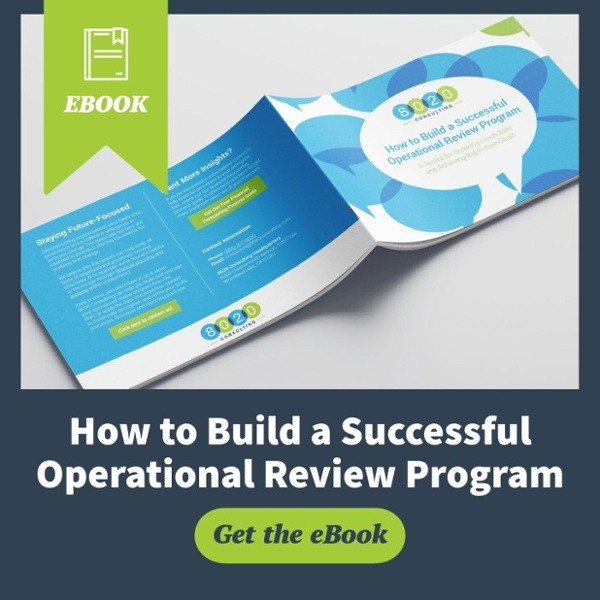Business plans for start-up companies have become mainstays in the business world. But more and more company initiatives and projects have begun to require business plans as a way of validating prudent investments and company spend as maturing businesses look for innovation within to drive future revenue growth. A time may come in a business or a division when you have a new idea or product you believe will equal big revenue for the company, but how do you convey your message to the larger organization? As the world turns towards innovation and technology to drive growth in this mature economy, creating an internal business plan is becoming more and more commonplace, if not a necessity.
If you have a good working relationship with your executive team, business ideas should not be popping up out of the blue. Instead, you should have a platform for discussion in either staff meetings or one-on-one sessions with the executives. However, it is important to put together a complete, comprehensive internal business plan for a few reasons:
- It shows that you have your stuff together and can be organized and methodical about your plan.
- You will need to evangelize your new plan quickly and succinctly throughout the organization, and a detailed business plan is the most effective way to disseminate information.
Here are a few suggestions for inclusion in your business to improve the probability of gaining approval:
Executive Summary
The Executive Summary may be the most important part of the internal business plan as it cements the audience’s first impression of the project. This may be the only page many executives have time to read and discuss, so make sure it tells the story in a summarized manner. Style, visualization, and financial accuracy are all important aspect of this page.
Questions to ask and answer include:
- What is the idea?
- Where did it come from?
- How much to you believe its worth?
- What is the duration of investment?
- What is the financial impact?
- What is the mechanism we need to enact and unlock this new revenue stream?
- How does this project tie into and/or complement the overall strategy for the business and any other growth initiatives? (It is important to see how this product or service will become an integral part of the organization for years to come and not a one-off fad or an ill-conceived idea.)
Marketing
It is very important to lay out your marketing strategy, as this will be the main focus point for management in understanding how realistic it will be to achieve your results. First, you need to identify your target market, whether it be a specific demographic or fanbase or creating a new segment. You will need to be very specific about your methods of attracting your target customers and the message you are going to represent to the overall market. If you are tapping into a new market, how will you get your message out there? If you are stealing share or competing against another rival, what will be your differentiation to gain share?
Without the right combination of message and means of delivering the message, even truly superior new products may have trouble gaining traction in the marketplace. If you can show that you already have customers lined up ready to purchase your products or services, this makes your case more convincing.
Management Team
Executives want to support new projects and new ideas, but they need to be confident in the people you put in charge. If you, as the author of the internal business plan, will not be directly operating the new product or service, but someone else on your team will be the main contact, you want to make sure they are a good fit for the project.
The team structure has to go beyond just your normal, everyday team configuration. It must show how each team member’s background and accomplishments contribute essential elements needed to succeed with this new venture. The project may involve more than one department, so you will want to show that you put time and effort into determining the team and define the responsibilities of each member. Make sure that you have a diverse group of people that have the availability to dedicate time to the project with a good mix of senior and junior employees.
Financial Projections
As the executive team decides whether they are going to approve of the investment in this new product or service, they have to consider whether they are going to get a sufficient return on their investment. Not only do they have to consider ROI, but in many companies where resources are limited and staffing up can be a political nightmare, business units also have to consider opportunity costs or tradeoffs related to moving individuals and not having them concentrate on already productive and proven products and services.
The financial projections provide clues about how well thought out the new products and services are as well as their financial viability. The executive team will look for whether the team has presented a reasonable forecast for revenue and profit growth that is both aggressive, but realistic for the business unit. When they see projections that seem unattainable, the project immediately loses credibility. Executive teams also want to see whether the management team backed up the projections with sound assumptions based on hard data obtained from industry sources – or were the projections simply guesswork. Financial projections in a business plan do not need to be voluminous or excessively complex. However, they do need to be clear and reasonable while being exciting from a ROI standpoint.
Getting Support for Your Internal Business Plan
While you may include additional information in your business plan, it is important to keep it short and succinct. It is also important that you dedicate the correct resources to develop, publish, and present this business plan. Our team at 8020 Consulting has experience putting together business plans for project and initiatives. You can contact us to learn more.
If you’d like to learn more about internal momentum toward business goals, we invite you to download our operational review program guide. It offers insights into how to organize meetings and set roles to encourage organizational traction:
About the Author
Lester has over 15 years of professional finance experience in strategic planning, forecasting and budgeting, financial analysis, and business evaluation. Prior to joining 8020 Consulting, Lester was the Director of Business Planning and Analysis at Warner Bros. and had previously worked as a Senior Manager of Retail Analysis and Manager of Finance for The Walt Disney Company. Additionally, Lester has held positions at Thomson Reuters and Public Financial Management. In his career, Lester also operated as the Chief Financial Officer for a consumer goods start-up company, where he oversaw the Accounting, Finance, Operations and HR functions. Lester’s expertise centers around FP&A, budgeting and forecasting, financial modeling, cause of change analysis, consolidation, industry analysis, and project management. Lester holds a Bachelor of Arts in Economics from Stanford University, and an MBA in Corporate Strategy and Finance from The University of Michigan, Ross School of Business.

